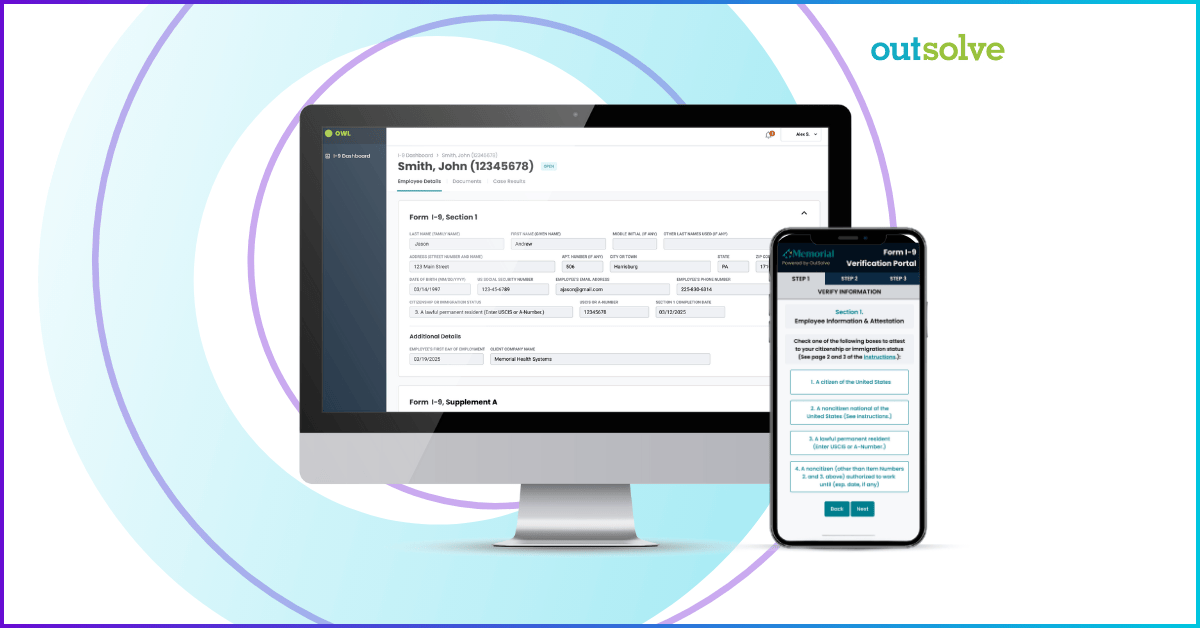 Federal Reporting Requirements: Why Contractors Use OutSolve
HR compliance failures begin in the margins with small errors, missed deadlines, or incomplete reports. But these minor issues can snowball into...
OutSolve
Jul 22, 2025 12:05:04 PM
Federal Reporting Requirements: Why Contractors Use OutSolve
HR compliance failures begin in the margins with small errors, missed deadlines, or incomplete reports. But these minor issues can snowball into...
OutSolve
Jul 22, 2025 12:05:04 PM
HR compliance failures begin in the margins with small errors, missed deadlines, or incomplete reports. But these minor issues can snowball into failed audits, penalties, and lost government contracts. For HR leaders navigating federal reporting requirements, the margin for error is thin, and the consequences are significant.
OutSolve Federal Reporting Requirements: Why Contractors Use OutSolve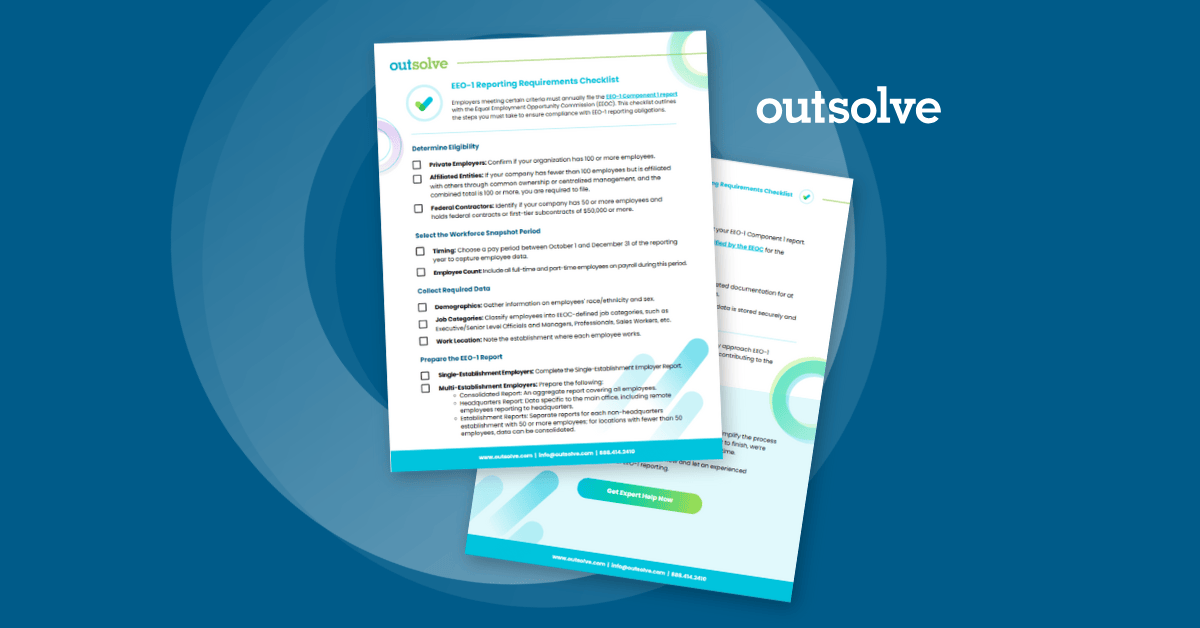 How to Prepare and File Your EEO-1 Report with Confidence
Preparing your EEO-1 Report may seem overwhelming and another deadline to hit, especially on top of all the other daily tasks you have on your plate....
Chris Foley
May 28, 2025 3:16:45 PM
How to Prepare and File Your EEO-1 Report with Confidence
Preparing your EEO-1 Report may seem overwhelming and another deadline to hit, especially on top of all the other daily tasks you have on your plate....
Chris Foley
May 28, 2025 3:16:45 PM
Preparing your EEO-1 Report may seem overwhelming and another deadline to hit, especially on top of all the other daily tasks you have on your plate. It doesn’t have to be! EEO-1 Report filing begins with one important step, determining whether your organization is required to file. From there, understanding what data to collect, how to format it, and when to submit it can make the process seamless.
Chris Foley How to Prepare and File Your EEO-1 Report with Confidence EEO-1 Reporting Requirements: A Complete Guide
EEO-1 Reporting Deadline 2024 The filing window for 2024 EEO-1 data reports ran from May 20, 2025, to June 24, 2025 and is now closed. Please ...
Chris Foley
Apr 23, 2025 10:08:14 AM
EEO-1 Reporting Requirements: A Complete Guide
EEO-1 Reporting Deadline 2024 The filing window for 2024 EEO-1 data reports ran from May 20, 2025, to June 24, 2025 and is now closed. Please ...
Chris Foley
Apr 23, 2025 10:08:14 AM
EEO-1 Reporting Deadline 2024
The filing window for 2024 EEO-1 data reports ran from May 20, 2025, to June 24, 2025 and is now closed. Please subscribe to OutSolve’s newsletter for updates on 2025 data collection as it becomes available.
Preparation and filing of your annual EEO-1 report is an important aspect of your HR compliance program. This guide covers everything you need to know about the EEO-1 filing deadline and compliance, best practices, and how to simplify the process. We also have an EEO-1 Reporting checklist to help walk you through the steps needed to stay compliant with your filing.
The EEO-1 report collects data on the race, gender, and ethnicity of your employees. The Equal Employment Opportunity Commission (EEOC) uses the data from this report to assess hiring practices and promote fair employment across the U.S. But beyond legal compliance, the EEO-1 Report is also an opportunity to highlight your company’s commitment to diversity.
The process can be detailed and time consuming for HR, so understanding the filing process and knowing how to submit your report efficiently is essential for avoiding potential issues and penalties.
What Is the EEO-1 Report?
The EEO-1 report is a detailed report that certain employers are required to file with the EEOC. The government uses the demographic data about your workforce to monitor hiring trends and ensure compliance with civil rights laws.
The main purposes of the EEO-1 Report is to:
- Collect workforce demographic data by race, gender, and ethnicity of employees.
- Identify and analyze potential patterns of discrimination.
- Help improve diversity and inclusion efforts in the workplace.
The EEOC plays a critical role in analyzing workplace diversity, using EEO-1 data to track progress on reducing racial and gender disparities. While individual submissions remain confidential, aggregate data helps shape employment policies and future labor laws.
Who Needs to File an EEO-1 Report?
Employers subject to EEO-1 reporting requirements must file if they fall into one of these categories:
- Private-sector employers with 100 or more employees
- Federal contractors with 50 or more employees and at least $50,000 in federal contracts
Additionally, employers must also categorize employees based on race, gender, and job type to comply with reporting standards. These federal EEO-1 reporting requirements help maintain transparency in hiring practices and ensure businesses follow equal employment laws.
EEO-1 Reporting Requirements and Deadlines
The EEO-1 filing deadline varies from year to year. Be sure to check the latest filing deadlines on the EEOC’s website to avoid missing out.
Employers must submit workforce demographic data categorized as follows:
- Job categories like management, professionals, technicians
- Race and ethnicity breakdowns like White, Black, Hispanic, Asian, Native American, and two or more races
- Gender breakdown like male and female
Failing to file an EEO-1 report can result in fines, penalties, or even litigation. It can also damage your company’s reputation and have a negative impact on the overall business.
How to File an EEO-1 Report
Filing an EEO-1 report requires careful attention to detail and an understanding of the process. Here’s a simple breakdown of the process:
- Gather Employee Demographic Information
- Ensure that all employees' gender, race, and ethnicity data are up to date.
- Categorize employees by job role and function.
- Log Into the EEOC’s EEO-1 Online Filing Portal
- Create an account or log in if you already have one.
- Enter your business details and follow the prompts to input the necessary data.
- Submit Your Data
- Carefully input the required information regarding employee demographics and job categories.
- Review the data for accuracy before submitting.
- Finalize and Submit
- Once everything is entered and reviewed, submit your EEO-1 report online.
While the process may seem simple, it can quickly become overwhelming due to the volume of data involved. That’s why many companies choose to outsource EEO-1 reporting to compliance experts like OutSolve.
Why Outsource EEO-1 Reporting to HR Compliance Experts?
Working with OutSolve can save you time, reduce the risk of errors, and support compliance with the EEO-1 filing deadline. Here’s why partnering with an HR compliance expert can benefit your organization:
- Expert Guidance: OutSolve’s team of professionals are well-versed in the aspects of the EEO-1 reporting requirements. They stay up to date on regulatory changes, ensuring your company’s filing is compliant.
- Error-Free Submissions: Mistakes on the EEO-1 report can result in penalties. OutSolve helps prevent common mistakes, such as incorrect demographic categorization or missing data.
- Time Savings: Outsourcing the report filing allows your HR team to focus on other important tasks while OutSolve handles the time-consuming process.
- Custom Solutions: Whether you're a small business or a large corporation, OutSolve tailors its services to meet your specific needs and industry requirements.
- Ongoing Support: Even after the report is filed, OutSolve provides continued support, helping your company maintain compliance year-round.
Common Mistakes to Avoid in EEO-1 Reporting
When it comes to filing your EEO-1 report, attention to detail is crucial. Some common mistakes to avoid include:
- Incorrect Categorization: Misclassifying employees by race, gender, or job category is one of the most common errors.
- Missing or Inaccurate Data: If data is missing or inaccurate, it can lead to delays or penalties.
- Late Filing: Always check the EEO-1 filing deadline to ensure your report is submitted on time.
- Failure to Update Employee Information: Outdated demographic data can cause issues. Make sure to regularly update employee details throughout the year.
- Errors When Submitting: Navigating the EEOC portal can be tricky for those unfamiliar with it, which is where an HR advisory firm can be beneficial.
By working with OutSolve, you can avoid these common pitfalls and proceed with a smooth reporting process.
Best Practices for EEO-1 Compliance
Staying compliant with EEO-1 reporting requirements is an ongoing process. Here are some best practices to keep in mind:
- Maintain Accurate Records: Regularly update your employee data to ensure accurate reporting at the time of filing.
- Promote Diversity and Inclusion Initiatives: Encourage diversity and inclusion efforts across your organization. Not only does this improve workplace culture, but it also strengthens your EEO-1 data.
- Leverage HR Technology: Utilize HR software that can help track demographic data and streamline the reporting process. This can save time and reduce the chance of human error.
What EEO-1 Reporting Means for Your Organization
EEO-1 Reporting compliance is more than just a legal requirement, it’s an opportunity to demonstrate a commitment to a more inclusive workplace. By staying on top of deadlines, maintaining accurate data, and filing on time, your company can avoid penalties and strengthen its workplace culture.
Outsourcing your EEO-1 reporting to experts like OutSolve can save you time, reduce risk, and ensure your organization stays compliant. For more information or to get started, click here and let us take the burden of the report off your plate.
Continue the conversation about EEO-1 reports and all HR compliance related matters in HR Gumbo City, our vibrant Slack community where HR professionals can gather to share ideas and learn best practices.
Chris Foley EEO-1 Reporting Requirements: A Complete Guide
 Act Now: Protect 2021 EEO-1 Reports—Submit Objections by December 10, 2024
The Office of Federal Contract Compliance Programs (OFCCP) has launched a new Freedom of Information Act (FOIA) request for federal contractors' 2021...
Debra Milstein Gardner
Nov 12, 2024 9:41:07 AM
Act Now: Protect 2021 EEO-1 Reports—Submit Objections by December 10, 2024
The Office of Federal Contract Compliance Programs (OFCCP) has launched a new Freedom of Information Act (FOIA) request for federal contractors' 2021...
Debra Milstein Gardner
Nov 12, 2024 9:41:07 AM
The Office of Federal Contract Compliance Programs (OFCCP) has launched a new Freedom of Information Act (FOIA) request for federal contractors' 2021 Type 2 Consolidated EEO-1 Reports. This request follows a similar action taken in 2022, which targeted 2016-2020 data. Contractors now have until December 10, 2024 to file objections if they believe their reports contain sensitive information that they wish to keep private.
Debra Milstein Gardner Act Now: Protect 2021 EEO-1 Reports—Submit Objections by December 10, 2024 EEOC Cracks Down on Employers: The Importance of Timely EEO-1 Reporting
The U.S. Equal Employment Opportunity Commission (EEOC) has recently taken legal action against 15 employers in 10 states for failing to submit their...
Debra Milstein Gardner
Jun 6, 2024 10:15:00 AM
EEOC Cracks Down on Employers: The Importance of Timely EEO-1 Reporting
The U.S. Equal Employment Opportunity Commission (EEOC) has recently taken legal action against 15 employers in 10 states for failing to submit their...
Debra Milstein Gardner
Jun 6, 2024 10:15:00 AM
The U.S. Equal Employment Opportunity Commission (EEOC) has recently taken legal action against 15 employers in 10 states for failing to submit their mandatory EEO-1 Component 1 data reports for 2021 and 2022. The employers include companies from the retail, construction, restaurant, manufacturing, logistics, and service industries.
Debra Milstein Gardner EEOC Cracks Down on Employers: The Importance of Timely EEO-1 Reporting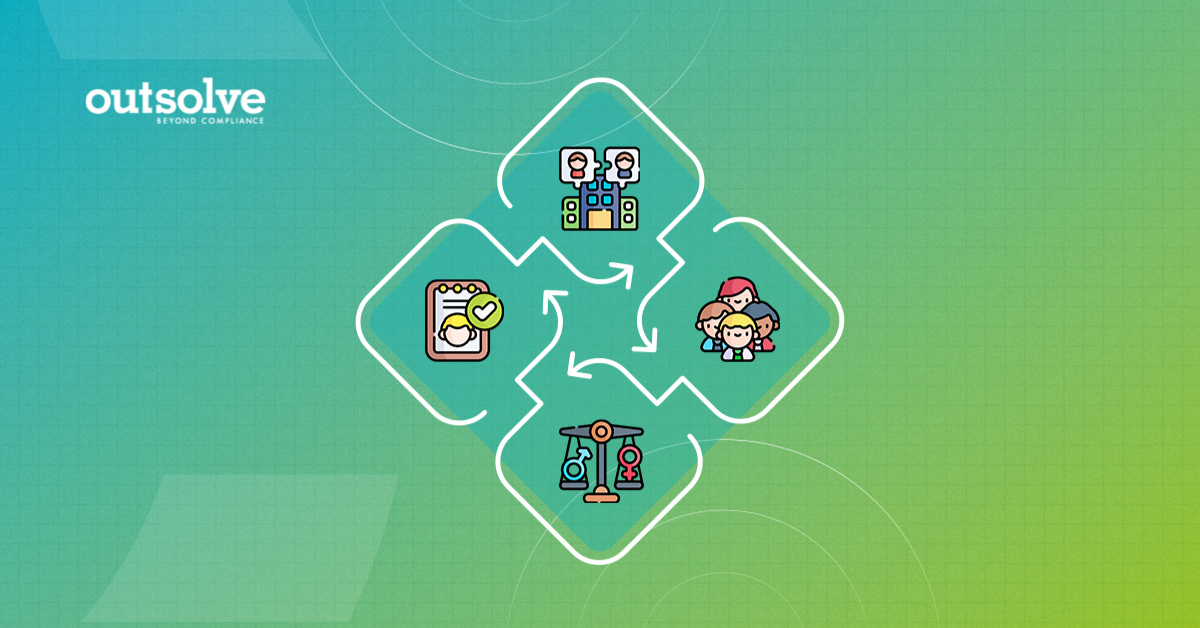 Traversing EEO-1 Reporting: Common Mistakes and Solutions
As the deadline for filing the 2023 EEO-1 Component 1 reports approaches, it's crucial for employers to ensure accuracy in their submissions. Filing...
Debra Milstein Gardner
May 30, 2024 10:00:00 AM
Traversing EEO-1 Reporting: Common Mistakes and Solutions
As the deadline for filing the 2023 EEO-1 Component 1 reports approaches, it's crucial for employers to ensure accuracy in their submissions. Filing...
Debra Milstein Gardner
May 30, 2024 10:00:00 AM
As the deadline for filing the 2023 EEO-1 Component 1 reports approaches, it's crucial for employers to ensure accuracy in their submissions. Filing errors can significantly impact OFCCP compliance efforts. The deadline to file 2023 EEO-1 reports is June 4, 2024, and the failure to file deadline is July 9, 2024. The Equal Employment Opportunity Commission (EEOC) opened the 2023 EEO-1 Component 1 data collection on April 30, 2024, hoping to encourage eligible filers to start the filing process early.
Debra Milstein Gardner Traversing EEO-1 Reporting: Common Mistakes and Solutions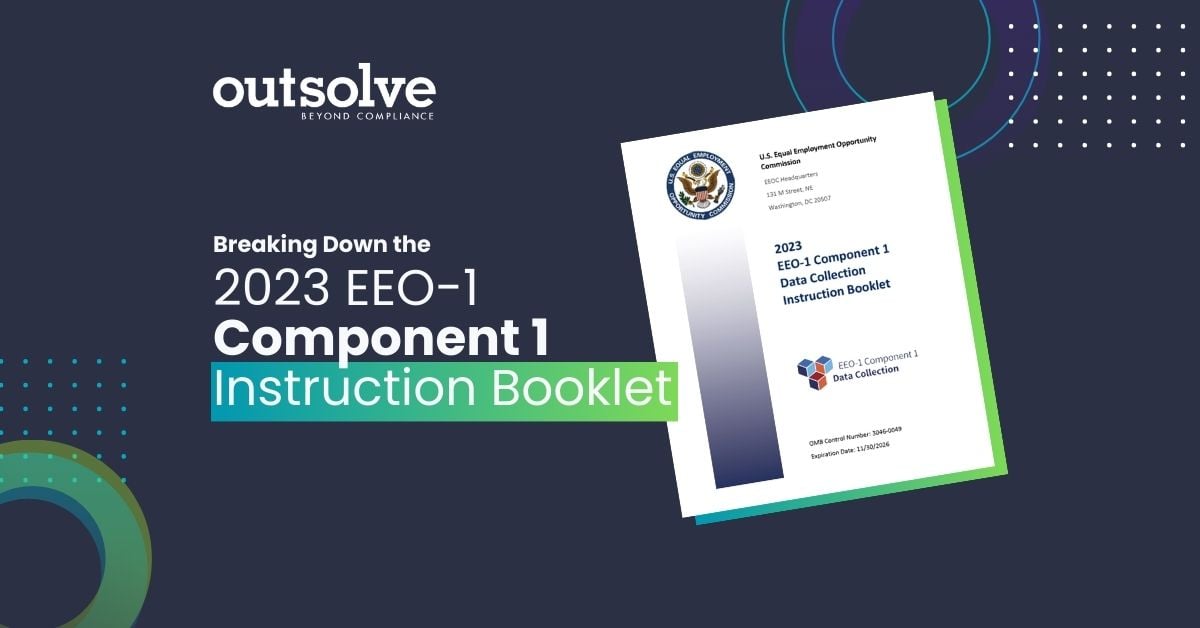 Breaking Down the 2023 EEO-1 Component 1 Instruction Booklet: Updates and Implications
The U.S. Equal Employment Opportunity Commission (EEOC) recently released the 2023 EEO-1 Component 1 Instruction Booklet, along with data file upload...
Debra Milstein Gardner
Apr 23, 2024 10:45:00 AM
Breaking Down the 2023 EEO-1 Component 1 Instruction Booklet: Updates and Implications
The U.S. Equal Employment Opportunity Commission (EEOC) recently released the 2023 EEO-1 Component 1 Instruction Booklet, along with data file upload...
Debra Milstein Gardner
Apr 23, 2024 10:45:00 AM
The U.S. Equal Employment Opportunity Commission (EEOC) recently released the 2023 EEO-1 Component 1 Instruction Booklet, along with data file upload specifications, signaling the start of the reporting season. This annual mandate requires private sector employers with 100 or more employees and federal contractors with 50 or more employees to submit workforce demographic data. Here's a breakdown of the latest updates and how they impact employers and government contractors.
Debra Milstein Gardner Breaking Down the 2023 EEO-1 Component 1 Instruction Booklet: Updates and Implications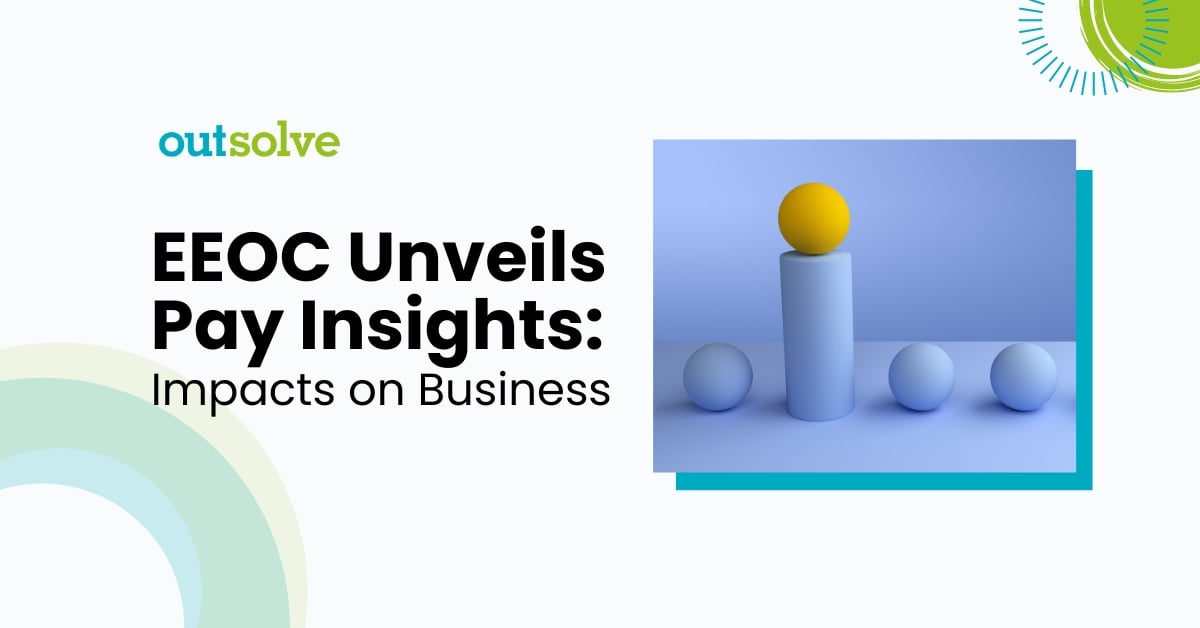 EEOC Unveils Pay Insights: Impacts of EEO-1 Component 2 Dashboard on Businesses
The March release of the EEO-1 Component 2 dashboard by the Equal Employment Opportunity Commission (EEOC) has sparked a new wave of interest in U.S....
Neil Dickinson
Apr 18, 2024 10:55:03 AM
EEOC Unveils Pay Insights: Impacts of EEO-1 Component 2 Dashboard on Businesses
The March release of the EEO-1 Component 2 dashboard by the Equal Employment Opportunity Commission (EEOC) has sparked a new wave of interest in U.S....
Neil Dickinson
Apr 18, 2024 10:55:03 AM
The March release of the EEO-1 Component 2 dashboard by the Equal Employment Opportunity Commission (EEOC) has sparked a new wave of interest in U.S. pay gaps and potential concerns for businesses. This new data portal allows users to explore pay data from large employers across various industries, broken down by race, ethnicity, gender, and job category. The data from 2017 and 2018 EEO-1 collections offers unprecedented transparency into workforce demographics and compensation practices.
Neil Dickinson EEOC Unveils Pay Insights: Impacts of EEO-1 Component 2 Dashboard on Businesses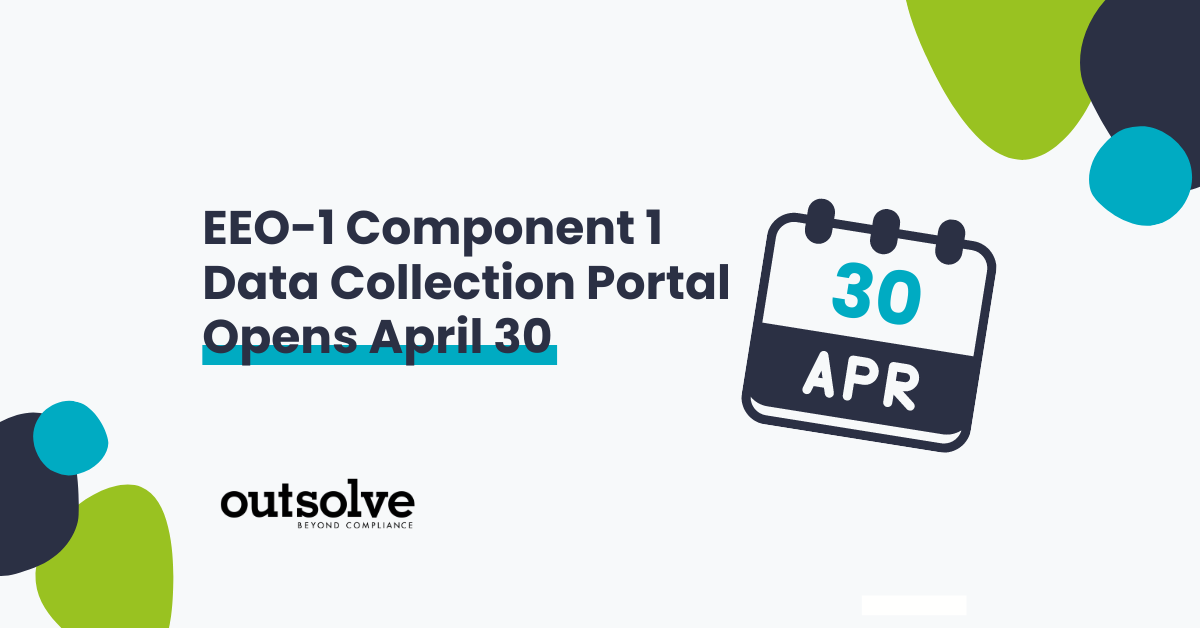 Mark Your Calendar: EEO-1 Component 1 Data Collection Portal Opens April 30, 2024
Each year, employers with 100 or more employees and federal contractors/subcontractors with 50 or more employees must file an EEO-1 report with the...
Debra Milstein Gardner
Feb 29, 2024 11:00:00 AM
Mark Your Calendar: EEO-1 Component 1 Data Collection Portal Opens April 30, 2024
Each year, employers with 100 or more employees and federal contractors/subcontractors with 50 or more employees must file an EEO-1 report with the...
Debra Milstein Gardner
Feb 29, 2024 11:00:00 AM
Each year, employers with 100 or more employees and federal contractors/subcontractors with 50 or more employees must file an EEO-1 report with the Equal Employment Opportunity Commission (EEOC). The 2023 EEO-1 Component 1 data collection portal will open on Tuesday, April 30, 2024 and close on Tuesday, June 4, 2024. The data supplied is used by the EEOC and other government agencies for enforcement and research. Filing the report is a legal obligation and is not voluntary.
Debra Milstein Gardner Mark Your Calendar: EEO-1 Component 1 Data Collection Portal Opens April 30, 2024.png?width=1200&height=628&name=OFCCP%20Challenges%20Mandate%20(1).png) OFCCP Initiates Appeal Against Adverse EEO-1 Report Disclosure Mandate
In a recent development concerning the disclosure of EEO-1 reports, the Office of Federal Contract Compliance Programs (OFCCP) filed a Notice of...
Debra Milstein Gardner
Feb 22, 2024 1:32:56 PM
OFCCP Initiates Appeal Against Adverse EEO-1 Report Disclosure Mandate
In a recent development concerning the disclosure of EEO-1 reports, the Office of Federal Contract Compliance Programs (OFCCP) filed a Notice of...
Debra Milstein Gardner
Feb 22, 2024 1:32:56 PM
In a recent development concerning the disclosure of EEO-1 reports, the Office of Federal Contract Compliance Programs (OFCCP) filed a Notice of Appeal following an adverse court ruling. As previously reported, OFCCP was directed to release these reports of federal contractors, which it had previously withheld from production in response to a Freedom of Information Action (FOIA) request from the Center for Investigative Reporting.
Debra Milstein Gardner OFCCP Initiates Appeal Against Adverse EEO-1 Report Disclosure Mandatecompany news

Mary MaddenMay 13, 2025
Need More Help? Contact OutSolve.
We offer HR compliance, anti-discrimination, and fair pay solutions.

.png)
